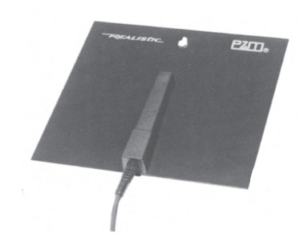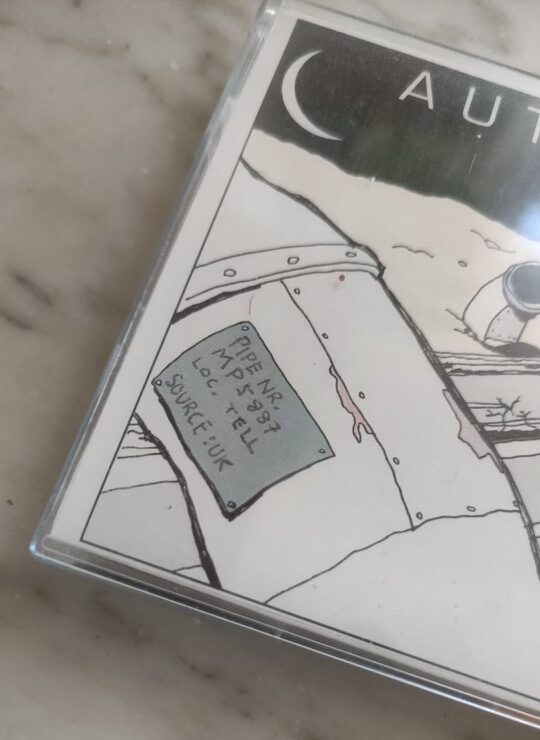Sometimes the musicians that we admire most are the least accessible to us, even after meeting them. And not because of who they are, but because of who we are. The depth of connection we feel is powerful, personal, and entirely our own—not even truly shareable with its subject. We love them, we follow their lives and careers, and when they pass, they leave a hole in us.
Upon recommendation from a friend who made me a Shellac tape (see sidebar), I spoke with my old friend Nat Fowler (Novo Line) of aughts Baltimore band The OXES, about Steve Albini, whom he admired, toured with, and grieves the loss of.
Nat heard about Steve Albini’s death from musician Marta de Pascalis, who works at the Berlin lathe cutting plant Lathesville, with whom he is working on his new record. He ran into electronic musician Beau Wanzer from Chicago a few days after Albini’s death and connected with him about the shared sense of loss. Soon, I contacted him out of the blue after at least a decade or two. He reminisced with me about a mixtape he made for his Maryland friend Krista that included Rapeman–how his friendship with her grew and strengthened over the years.
I cannot help but feel like all these connections between people are the penultimate tribute to an artist’s life led well. Albini inspired fans to commune (and conflict, too) around ideas and sounds.
Never anything to do in this town. Live here my whole life.
It was Kerosene by Big Black that made me aware of Steve Albini. My sister’s boyfriend had purchased the Atomizer tape at the mall, decided he didn’t like it, and left it at our house. Those lyrics matched my rural rage perfectly.
Once I got to college in the mid-nineties, Steve Albini was a punk rock household name- if not for his acerbic comments then surely for his recording studio Electrical Audio or for Shellac. I didn’t listen closely to Shellac until my friend, Marc, kindly made me this tape.
He doesn’t remember the tape. He doesn’t remember why or how he included excerpts of the San Antonio vs. Rodriguez court case, which eerily visited mid-century white supremacy to my listening ears. Nonetheless, this is still my favorite batch of Shellac songs, with custom interstitials.
What Marc does remember is when our friend Nat first played Shellac for him. Nat Fowler, one-third of aughts Baltimore band The OXES, played the first Shellac 7” to Chris Freeland and Marc Miller, the other two-thirds of the band. Nat’s interest in Albini ran deep.
“I first heard about him from Thrasher Magazine, around the summer I was 12. May 1987,” Nat said. He later heard Big Black but didn’t like it. But he loved Rapeman. He had Two Nuns and a Pack Mule on cd when he first got his driver’s license.
Nat was interning at a television station in high school, “already head to toe in equipment,” he said. And he and his friends were experimenting with recorders and audio equipment to record their basement band. He idolized Steve Albini, admired his recording style, and decided he wanted to do similar work.
After Albini’s death, while listening to a podcast about him, Nat recalled that in high school, he went to Radio Shack and bought a flat Pressure Zone Microphone (PZM) so he could record sound closer to Albini’s style. “It looks like an F-18 stealth fighter,” he tells me. “A surface becomes microphonic.” Inspired by Jesus Lizard and other Touch and Go bands, Nat was trying to get Albini’s kick drum sound.
“I would go to Reptilian Records and get every new Amphetamine Reptile and Touch and Go release,” Nat remembers.
Before returning to the Baltimore area to attend the University of Maryland Baltimore County (UMBC), Nat spent a lonely first year of college at the University of Delaware. “I was stalking the local record store for the first Shellac 7 inch.”
He frequented Usenet newsgroup forums, early pre-World Wide Web computer network communication systems, looking for Albini-related content. The newsgroups allowed Nat to access Albini’s Forced Exposure tour diary from the final Big Black tour and other writings. “I liked how scathing it was,” Nat said, “I thought, ‘This guy’s fucking sharp.’ He would do references like Dennis Miller did in comedy, but for music. I thought it was funny. I thought it was insightful.”
In one part of the tour diary, Albini described going to see the movie Robocop:
Sunday August 2 — The Cavalier Motel, South San Francisco (The Industrial City)
We traveled by hovering fixed in space and let the earth rotate beneath us, so we landed in S.F. on the same hour and day we left Oz. If we kept going, we’d never age! Felt a need for an American “OD” so I went to see the most American movie I could find, “Robocop”. Sounded great: a violent cop- and-technology-worshipping shooting-spree w/stuff that blows up. I was disappointed in that it had strong authority/corporation/police-mistrust themes. I wanted it to be completely horseshit, and in its feeble little way, it tried to be profound. Bummer. The motel has the cable.
https://web.archive.org/web/20000818044126/http://petdance.com/actionpark/bigblack/tourdiary/
“He wanted to feel lobotomized while on tour and was disappointed that it wasn’t dumb,” Nat described. “I could relate to that.”
“I always liked Steve’s [recording] style,” Nat said. “He definitely colored recordings with his own aesthetics.”
“One thing I learned or at least remained faithful to of Steve’s ethos is that I always try to record everything live when possible, to capture the real performance energy.”
On May 6, 2000, Princeton University hosted a festival called The Last Show. The OXES played. Shellac headlined. Shellac then asked OXES to play with them on subsequent tour dates.
(Couldn’t find footage of the OXES from the Last Show, but here they are in the upstairs of the old Ottobar, just two months prior…)
“I was very nervous, star struck. Never meet your idols,” Nat said. “Always, Marc and Chris were wisecracking with Steve, but I couldn’t even get over it.”
In OXES, Nat’s guitar work was very influenced by Albini. Nat was trying to get a similar guitar sound. “A little bit polyrhythmic,” he says. But moreso, Albini influenced Nat by inspiring him to “make up my own way to play, and if it sounds good to me it sounds good.”
Nat liked the fact that Shellac made 1,000 copies of a record only for friends. Each recipient’s name was included in the cover art. The joke was that if the record were sold, Shellac would know the culprit! Nat made a triple cassette called Autobahn Zwei with the same premise, shown here. Each recipient’s personalized copy included their initials, birthdate, and abbreviation of street name on the sleeve of the character in the left, as shown in Marta De Pascalis’s tape. The second two images, by Nat Fowler, are of Andrea Dama’s tapes.
Currently, Nat is working on a 200-copy record release. “Nobody’s ever delivered a lacquer before,” someone at the record pressing plant said to Nat as he approached, holding it like a pizza box. Personally working on all the steps to bring the record to creation is important to him. He oversaw mastering, the cutting of the lacquer, proofing the test pressings, and running the plotter press over silk screened covers for the artwork.
“That’s 90% [because of] Albini and the rest because of other reasons that other people got from Steve Albini,” Nat joked. Nat chose an inscription for the run out groove of the record, the space between the grooves of the recorded music and where the label starts: “RIP The Hated Chinee.”
Nat Fowler lives in Berlin Germany with his wife and son. He is the mastermind behind Novo Line, misusing archaic tech and ancient frequencies.








